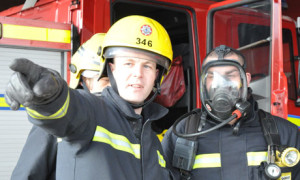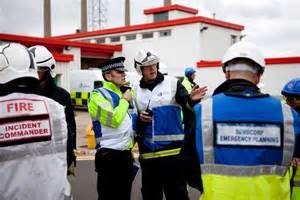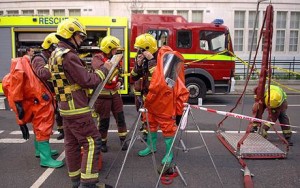By: Robert Avsec, Executive Fire Officer
In a recent post I wrote about Fire Service Culture Defined following the United States Fire Administration’s release of its report, National Safety Culture Change Initiative: Study of Behavioral Motivation on Reduction of Risk-Taking Behaviors in the Fire and Emergency Service.
As is my modus operendi, I posted that post to the various social media platforms that I participate in which include LinkedIn. One of my LinkedIn fire service colleagues from the United Kingdom (UK), Adrian Clarke, provided the following comments and insights:
 Hi Robert,
Hi Robert,
An interesting read and analysis of fire service culture [in the United States].
Having retired from the UK fire service having completed 30 years of service (as a frontline firefighter), some of the content of this report took me back many years in the UK.
The cultures and behaviours [sic] described along with the practices were prevalent in the UK fire service, but over many years we achieved cultural change to make fire fighter a safer (never totally safe profession).
Much of this cultural change was driven by the Fire Brigades Union (of which I was an official) and it faced resistance from not only the management and the employers, but also our own members. In the early days we were accused by our members of “wrapping them up in cotton wool”.
In the USA you certainly have a very militaristic and I would say macho culture in your fire service. This is compounded by the public perception of fire fighters and the pedestal they put them on. (Don’t get me wrong as a former fire fighter I hold all fire fighters in high esteem, but they need to realise [sic] they are not super human).
Cultural change will only be achieved when those who lead the services lead by example.
Some of your working practices [in the U.S.] astound some of us in the UK and indeed our very strict Health and Safety laws would not allow them here (which also goes to change the culture).
I now work for a company that carries out cultural change programmes [sic] for clients including the fire service

DTEM-Eddie Mulholland-25/01/07.
London Fire brigade react to a chemical incident in Tufton St , Westminster.
and change will always have those who want to resist it. But change is positive and in the end we want fire fighters to have long and productive careers and then live long and healthy and happy retirements (because they will have earned that).
I will watch from across “the pond” with interest.
Adrian Clarke
Interesting perspective from one of our own “on the outside looking in”, no? What are you and your department doing to facilitate the necessary cultural changes to create a Culture of Safety in the fire service in the USA?
 Fire & EMS Leader Pro The job of old firefighters is to teach young firefighters how to become old firefighters!
Fire & EMS Leader Pro The job of old firefighters is to teach young firefighters how to become old firefighters!